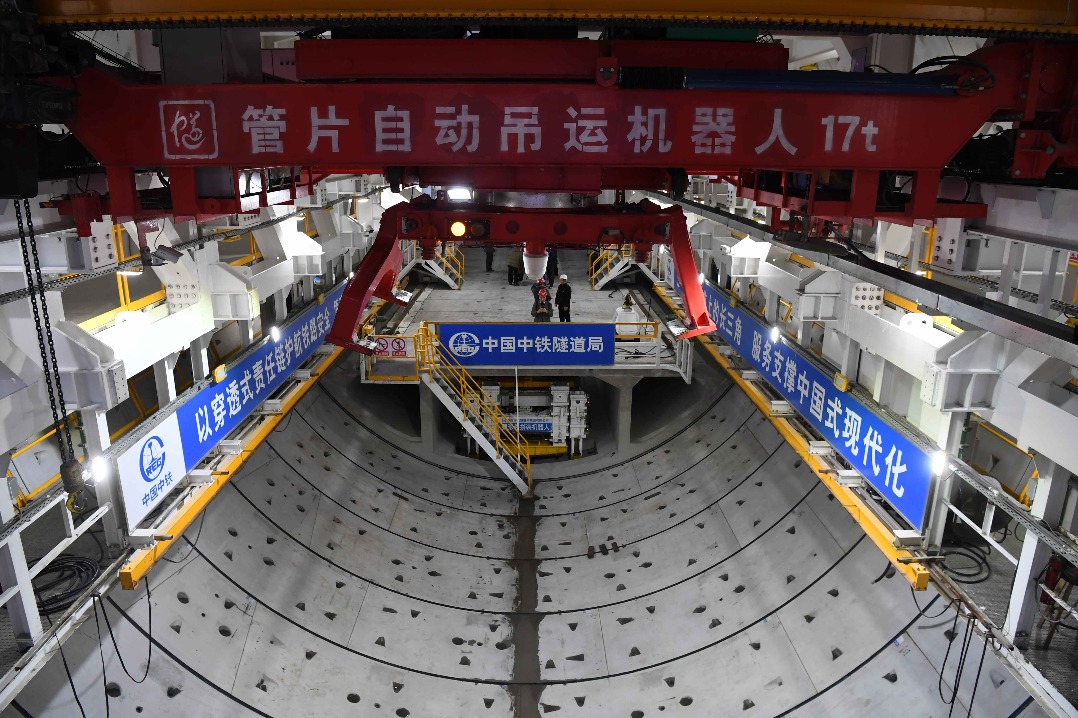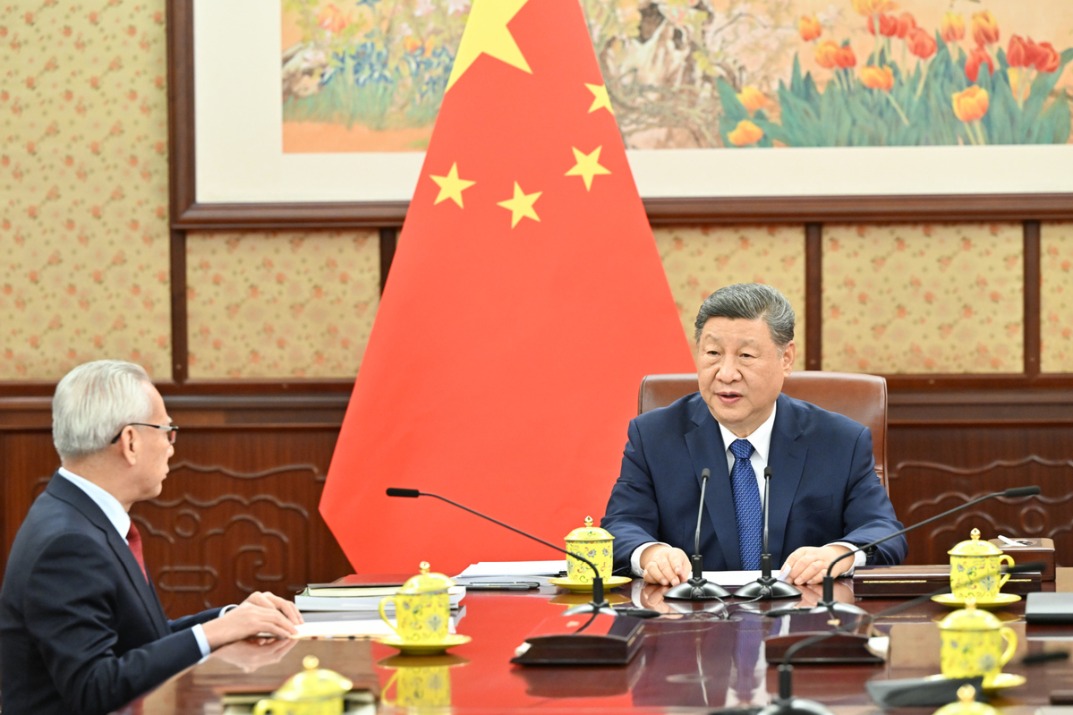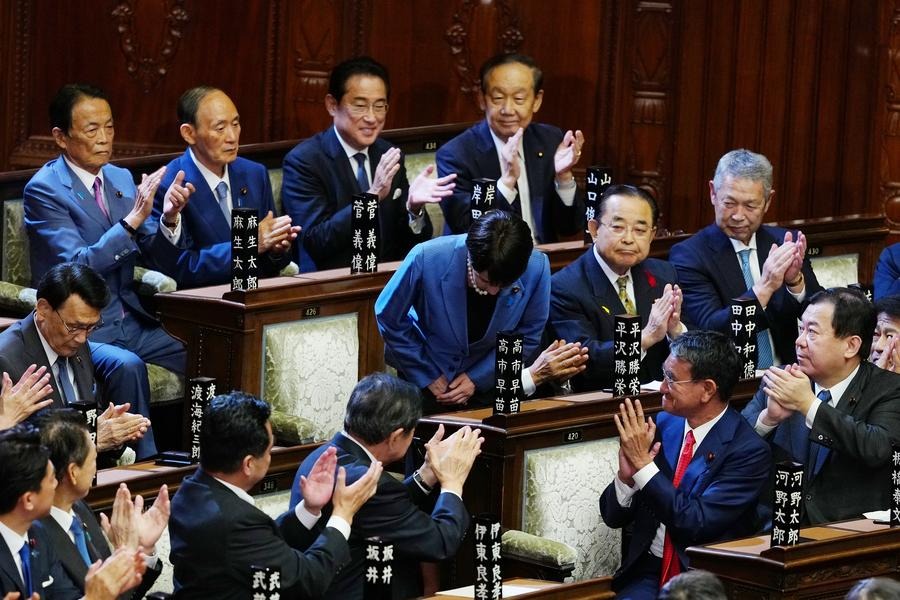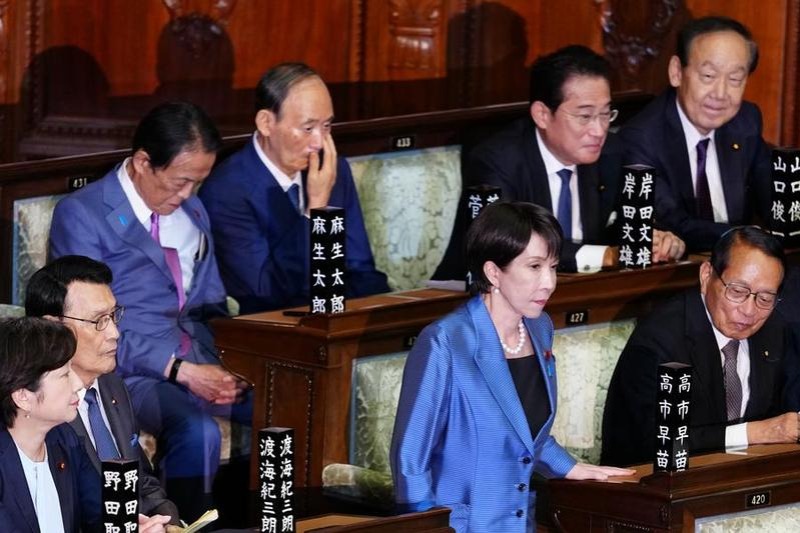To its own back yard


YAN XINGYI/FOR CHINA DAILY
China should take steps to minimize the negative impacts of Washington's efforts to bring manufacturing back to the US
After the 2008 financial crisis, the political elites in the United States came to realize the importance of manufacturing. From the re-industrialization strategy of the Barack Obama administration to the Donald Trump administration's initiative to "bring manufacturing back to the US", and now the Joe Biden administration's plan to revive US manufacturing, the nation has been pushing for the resurrection of domestic manufacturing by offering incentives to homemade products, toughening "Buy American "rules, improving the ecosystem for industrial innovation and adopting protectionist measures.
Through these efforts, some progress has been made in the endeavor to bring manufacturing back to the US, but the target has not been fully achieved.
First, despite a made-in-the-US rebound, its manufacturing industry remains "hollowed out". The added value of US manufacturing grew from $1.7 trillion in 2009 to $2.79 trillion in 2022, and the spending on construction has surged. However, the value added by US manufacturing as a percentage of GDP has been decreasing to the lowest level since the financial crisis. The real economy remains weak compared with the virtual economy with the added value of manufacturing lower than the financial and services industries.
Second, the increased manufacturing jobs have not rebuilt the country's middle class. Data released by the US Bureau of Labor Statistics indicates that the number of workers employed in manufacturing grew from 11.59 million in 2009 to 13.53 million in 2022, with the unemployment rate dropping from 10 percent to 3.5 percent. However, the share of US aggregate income earned by the middle class shrank from 45 percent in 2011 to 42 percent in 2020. The numbers prove that "bringing manufacturing back to the US" policy has not addressed the income inequity of the country, and failed to raise the share of earnings of the middle class.
Third, "bringing manufacturing back to the US" has strengthened the resilience of US supply chains, but has not changed its dependence on China. Since measures to revive manufacturing were put in place, made-in-the-US products have hit a record high, with less foreign goods imported. Meanwhile, the sources of US imports have become more diversified, with more goods that used to be bought from China now coming from Mexico, Canada or Vietnam. That being said, the US' reliance on China remains strong: most of the goods the US now imports from Mexico, Canada and Vietnam have upstream trade and investment ties to China.
That the "bringing manufacturing back to the US" strategy has failed to reach the desired target can be attributed to three reasons.
First, the two parties' divergence on the approach to revitalizing manufacturing has had an adverse impact on policy implementation. While the Democrats prefer bigger government and advocate boosting domestic manufacturing through increasing public investment and government subsidies, the Republicans want smaller government and seek to lure manufacturing companies back and reduce the costs of made-in-the-US by lowering taxes and raising tariffs.
Since the Republican Party regained control of the House of Representatives in the 2022 midterm elections and the 2024 presidential election is right around the corner, the Biden administration's manufacturing initiatives will face stiff opposition from the Republicans. Donald Trump, the leading Republican presidential candidate, has vowed to repeal the electric vehicle tax credits enacted in the Inflation Reduction Act on his first day in office if he is elected, which would surely hurt the development of the nation's electric vehicle industry.
Second, the US is plagued by a shortage of workers. According to data by the US Bureau of Labor Statistics, the private sector had a deficit of 8.01 million workers at the end of December, 2023, with 601,000 manufacturing jobs unfilled. After the Inflation Reduction Act and the CHIPS and Science Act came into effect, the US has witnessed an increasing shortage in clean energy and semiconductor wafer factories, with 1.4 million positions estimated to be vacant by 2030. The lack of interest in blue-collar jobs among the younger generation is complicating the hiring difficulties in the manufacturing sector in the long term.
Third, due to the higher costs of labor and land in the US, many manufacturing companies that moved out of China didn't return to the US, but instead relocated to other low-cost countries in Asia or Mexico. Moreover, poor infrastructure, unstable supplies of materials and components, and an incomplete network of upstream and downstream suppliers have dampened the enthusiasm of manufacturers to go back to the US.
As the policy to bring manufacturing back to the US threatens the status of China as the world's largest manufacturing power, and makes it harder for it to access leading technologies through cooperation, China should take steps to minimize the policy's negative impacts.
First, China needs to capitalize on its huge domestic market, relatively high productivity, complete manufacturing system, sound supply chain infrastructure, and an ever-improving business environment to increase its appeal to foreign capital.
Second, China should keep to the right direction of globalization, deeply participate in the global industrial division of labor and cooperation, and strengthen cooperation in industrial chains and supply chains with third parties. It is imperative for the country to safeguard the diverse and stable international economic landscape to mitigate the negative impacts of "bringing manufacturing back to the US" and prevent the supply chains from being severed.
Last but not least, China should double down on its efforts to boost independent innovation in manufacturing by promoting industry-academia-research cooperation and improving the innovation ecosystem in manufacturing. The country also needs to build research platforms of key generic technologies to elevate the manufacturing industry to the middle and higher ends and strengthen the core competitiveness of the manufacturing sector.
Gong Xiaofei is an associate researcher with the Institute of American Studies at the Chinese Academy of Social Sciences. Yuan Zheng is deputy director of the Institute of American Studies at the CASS.The authors contributed this article to China Watch, a think tank powered by China Daily.
The views do not necessarily reflect those of China Daily nor the institutions he represents.
Contact the editor at editor@chinawatch.cn.


































